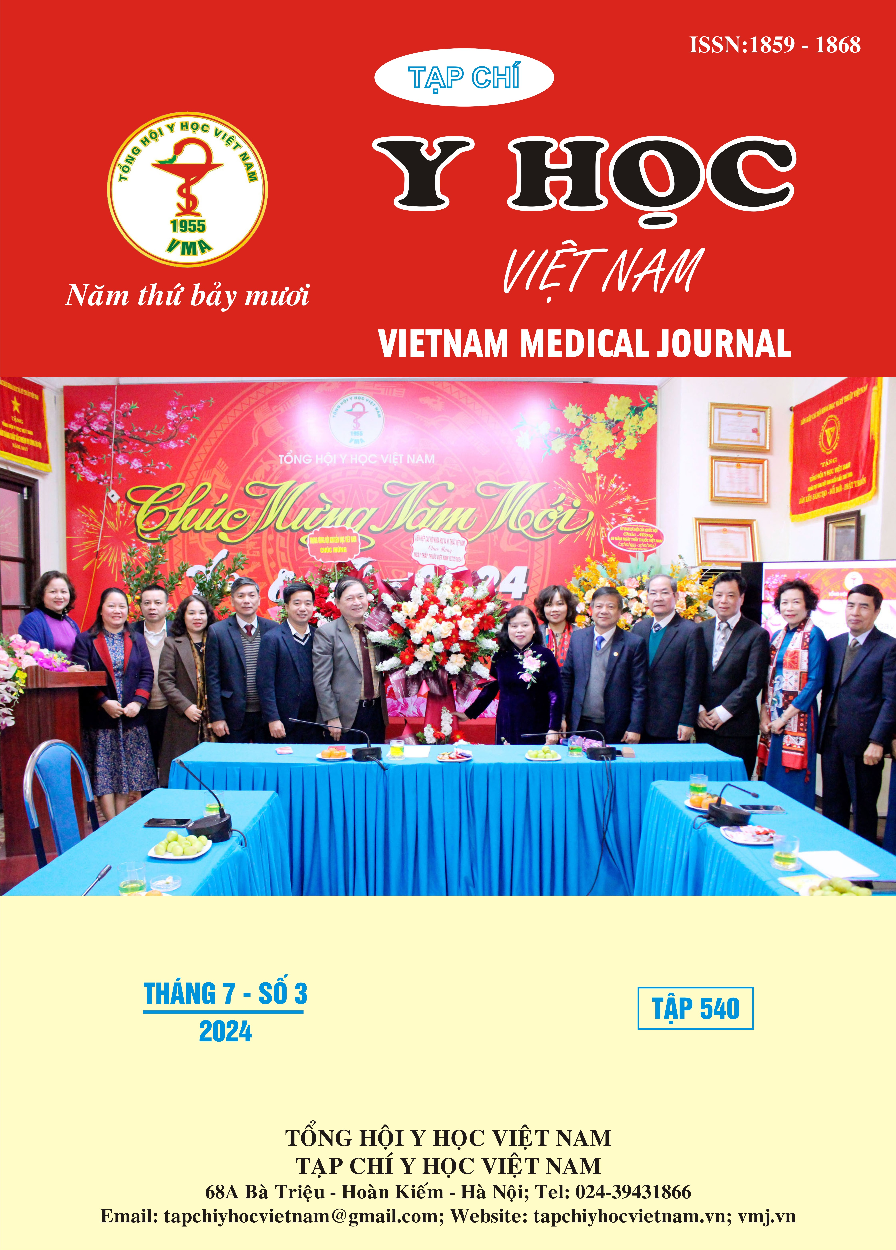THE RESULTS OF CLOSED DISTAL TIBIA FRACTURE TREATMENT BY MINIMALLY INVASIVE PLATE OSTEOSYNTHESIS
Main Article Content
Abstract
Background: Distal tibial fracture is a common type of injury that can be treated in many ways. In recent years, bone union and complications in those fractures have been the main factors for consideration in patients treated by original surgery. Minimally invasive plate osteosynthesis is a new procedure which is considered as a potential treatment with a low rate of complication and excellent bone healing percentage. Objectives: Evaluation outcomes of minimally invasive plate osteosynthesis for closed distal tibia fractures and some factors affecting treatment results at Can Tho Central General Hospital and Dong Thap General Hospital. Materials and Methods: Patients who had closed distal tibia fractures and had undergone minimally invasive plate osteosynthesis were included in the study. We noted some characteristics of patients, clinical, X-ray, and evaluation outcomes including fixation results, bone healing results through JL Haas and JY De la Cafinière, rehabilitation according to AOFAS, and patient satisfaction. Results: The average age was 52,73 ± 15,3. The main AO/OTA type was 43A1. 100% patients union with an average bone healing time was 12,51 weeks. The average AOFAS score after 6 months postoperative of 27patients was 95,44 ± 4,136, very good rehabilitation was 92,59% and good was 7,41%. The union and rehabilitation results were satisfactory in 94,59% of patients. Conclusion: Minimally invasive plate osteosynthesis of distal tibial fracture brings significant results with high rate of union and resuming early return to activities.
Article Details
Keywords
distal tibia fracture, Minimally Invasive Plate Osteosynthesis, Can Tho Central General Hospital, and Dong Thap General Hospital
References
2. Nguyễn Ngọc Hiếu (2016), Đánh giá kết quả điều trị kết hợp xương nẹp vít gãy đầu dưới hai xương cẳng chân do chấn thương bằng kỹ thuật MIPO tại Bệnh viện Quân y 7A, Hội nghị khoa học Bệnh viện Quân y 120 mở rộng lần thứ I năm 2017.
3. Nguyễn Bá Ngọc (2023), “Kết quả điều trị gãy kín đầu dưới xương chày bằng kết hợp xương nẹp khóa tại Bệnh viện Quân Y 103”, Tạp chí Y học Việt Nam tập 532, tr 6-11.
4. Ahmed A. Khalifa, et al. (2019), "Conventional Open Reduction and Internal Fixation (ORIF) Compared to Minimally Invasive Plate Osteosynthesis (MIPO) for Treatment of Extra-Articular Distal Tibia Fractures - A Prospective Randomized Trial", Orthopedics and Rheumatology Open Access Journal, 13(4).
5. Egol K.A (2015), "Ankle fractures", Rockwood and Green's Fractures in Adults, 8th Edition.
6. Reto Babst (2017), "Minimally invasive osteosynthesis", AO Principles of Fracture Management, AO Foundation, pp. 149-172.
7. Sharma N. and Gulati A. (2022), “Functional outcome of distal tibia fracture fixation with locking compression plate (LCP) using MIPO technique in a tertiary care hospital in eastern India”, International Journal of Orthopaedics, 8(1), 310-313.
8. Shukla R. (2023), “Factors affecting functional outcome of distal tibia fractures treated by plating using minimal invasive percutaneous plate osteosynthesis technique”, Int. j. of adv. res. 11 (apr), pp.1649-1658.


